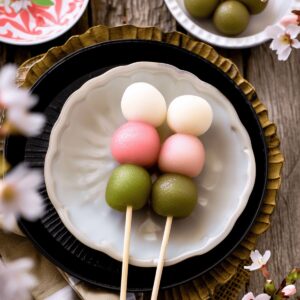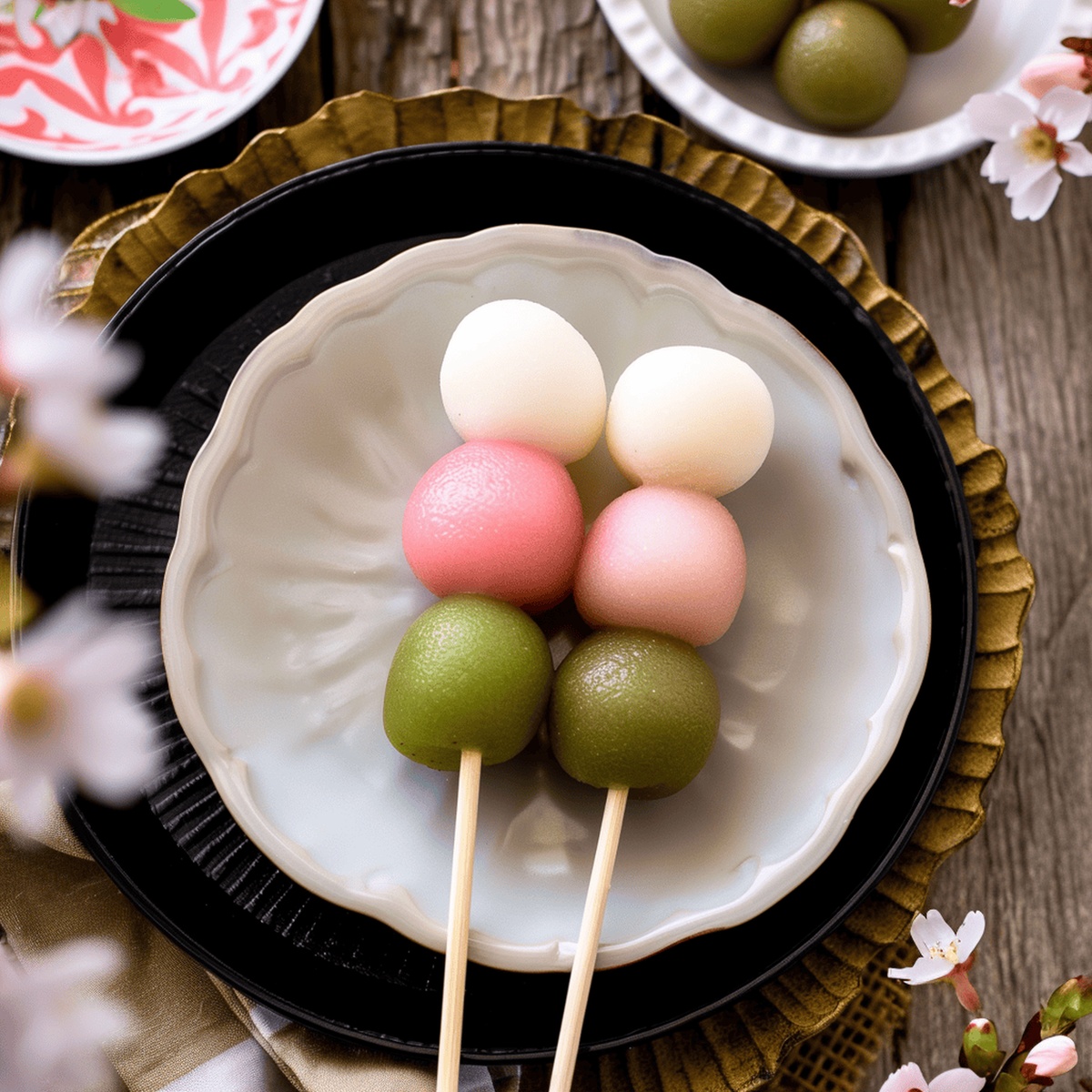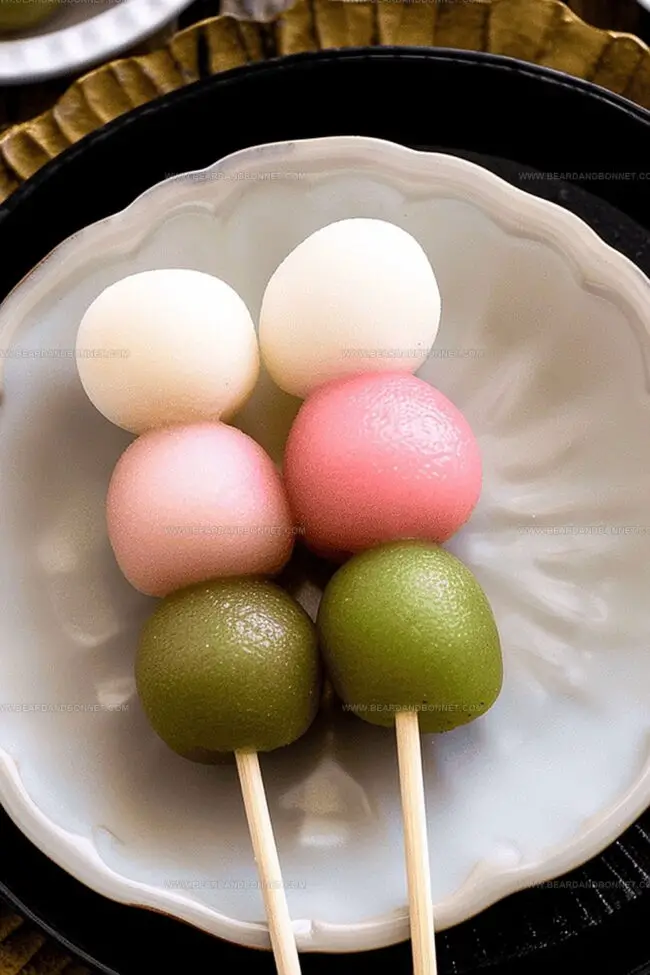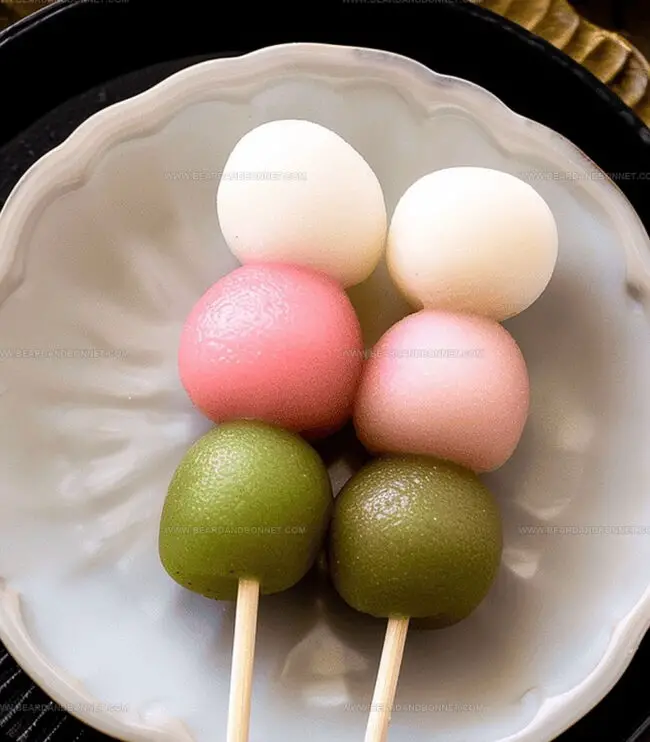Dreamy Hanami Dango Recipe: Sweet Springtime Treats
Sweet hanami dango captures the delicate essence of japanese springtime celebrations with its soft, pillowy texture and subtle charm.
Pastel-colored rice flour dumplings represent more than just a dessert—they symbolize cultural connection and seasonal beauty.
Traditional festivals bloom with these delightful treats, bringing communities together through shared culinary experiences.
Crafted from simple ingredients, these mochi-like confections offer a glimpse into centuries-old japanese culinary traditions.
Soft, chewy, and beautifully presented, hanami dango revamps ordinary ingredients into an extraordinary sensory experience.
Each bite carries whispers of cultural significance and elegant craftsmanship passed through generations.
The magic of these dumplings lies in their ability to connect people through food and celebration.
Why Hanami Dango Is a Seasonal Treat to Try
Hanami Dango Ingredient Checklist
Flours and Dry Ingredients:Sweeteners and Flavoring:Liquid and Coloring:Rolling and Shaping Your Dango Just Right
Step 1: Prepare Skewers And Water
Soak bamboo skewers in cool water to prevent burning. Fill a large pot with water and start heating on low.
Step 2: Create Dough Base
In a mixing bowl, combine:Slowly add hot water while stirring until dough becomes smooth and moldable.
Step 3: Color The Dough
Separate dough into three equal portions. Use natural coloring:Step 4: Shape Dough Balls
Roll each colored dough into small, uniform spheres about bite-sized.
Step 5: Boil Dango
Gently drop colored balls into simmering water. Cook until they float and look puffy, around 7-8 minutes.
Step 6: Cool Dango
Transfer cooked balls immediately into ice water to stop cooking and preserve texture.
Step 7: Assemble Skewers
Thread colored balls onto prepared bamboo skewers in traditional order:Step 8: Serve And Enjoy
Present dango at room temperature. Optional: Serve with sweet red bean paste for extra flavor.
Quick Tips for Soft, Chewy Hanami Dango
How to Store Leftover Dango the Right Way
What to Serve With Hanami Dango Skewers
Variations to Give Hanami Dango a Twist
Print
Hanami Dango Recipe
- Total Time: 23 minutes
- Yield: 4 1x
Description
Sweet Japanese hanami dango brings springtime charm to dessert lovers. Delicate rice flour dumplings dance with pastel colors while celebrating cherry blossom season, offering delightful bites that connect you to traditional Japanese culinary heritage.
Ingredients
Dry Ingredients:
- ⅔ cup (160 ml) joshinko (Japanese rice flour)
- ¾ cup (180 ml) shiratamako (glutinous rice flour/sweet rice flour)
- ⅓ cup (80 ml) sugar
- 7 ounces (200 grams) dangoko (Japanese rice dumpling flour) (optional)
- ¼ teaspoon matcha (green tea powder)
Liquid Ingredients:
- ⅔ cup (160 ml) boiling water
Coloring Ingredients:
- Red food coloring
- 1 tablespoon yomogi (mugwort) (optional)
Instructions
- Soak bamboo skewers in cold water to prevent charring during cooking, ensuring they remain intact throughout the preparation process.
- Combine joshinko, shiratamako, and sugar in a spacious mixing vessel, creating a foundational mixture for the traditional Japanese treat.
- Introduce hot water gradually into the dry ingredients, kneading meticulously until the dough achieves a cohesive, pliable consistency that holds shape without crumbling.
- Partition the dough into three uniform segments, dedicating each portion to a distinct color palette: matcha green, soft pink, and pristine white.
- Carefully roll each colored segment into small, uniform spheres, maintaining consistent size and smooth surfaces for aesthetic appeal.
- Gently submerge the delicate dough balls into simmering water, monitoring their transformation as they ascend to the surface, indicating perfect doneness.
- Swiftly transfer the cooked dango into an ice bath, halting the cooking process and preserving their tender, chewy texture.
- Thread the colored spheres onto prepared skewers in a traditional tricolor arrangement: verdant green, immaculate white, and blush pink.
- Present the hanami dango at ambient temperature, offering a complementary side of sweet red bean paste for those desiring an additional layer of flavor complexity.
Notes
- Master the art of timing by preparing ingredients and equipment simultaneously for a seamless cooking experience.
- Color your dango with natural and food-safe ingredients, creating a visually stunning dessert that reflects traditional Japanese aesthetics.
- Avoid overcooking by carefully monitoring dango balls and quickly transferring them to iced water, ensuring perfect texture and optimal taste.
- Prep Time: 15 minutes
- Cook Time: 8 minutes
- Category: Desserts, Snacks
- Method: Boiling
- Cuisine: Japanese
Nutrition
- Serving Size: 4
- Calories: 130
- Sugar: 8 g
- Sodium: 1 mg
- Fat: 0.5 g
- Saturated Fat: 0 g
- Unsaturated Fat: 0 g
- Trans Fat: 0 g
- Carbohydrates: 30 g
- Fiber: 0 g
- Protein: 2 g
- Cholesterol: 0 mg




Alex Reed
Founder & Lead Content Writer
Expertise
Recipe Development and Testing, Culinary Education, Food Writing and Blogging, Sustainable Cooking Practices, Global Cuisine Exploration
Education
Johnson & Wales University
Le Cordon Bleu Paris
Alex Reed is an inventive chef and food creator with a passion for dishes that balance taste, health, and sustainability.
Trained at Portland Community College and holding an Advanced Pastry Arts certificate from Oregon Culinary Institute, Alex brings more than 10 years of practical culinary experience to every recipe he develops.
His background uniquely blends traditional cooking skills with modern, mindful eating principles. As the founder of Beard and Bonnet, Alex creates recipes that encourage readers to cook confidently.